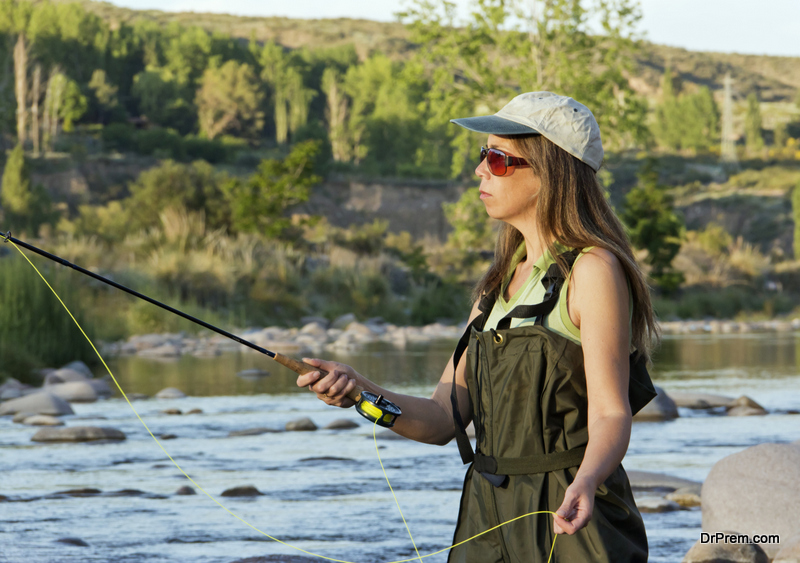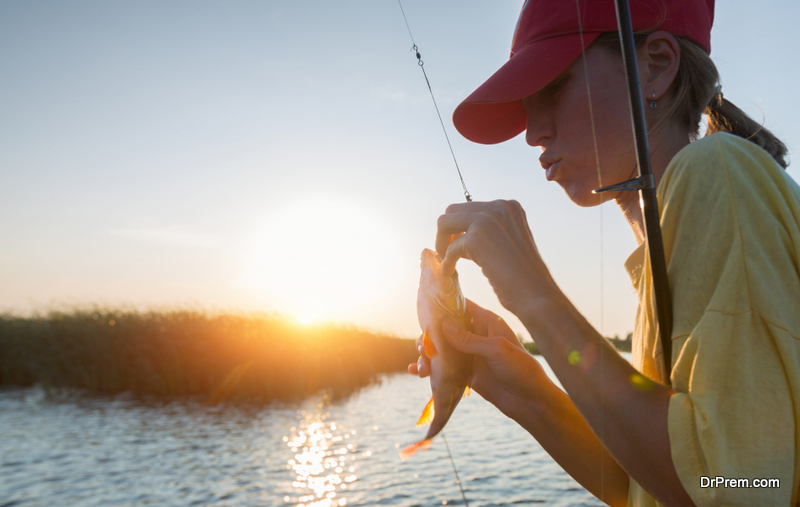If you enjoy being outdoors and like to spend your free time on the water, few hobbies are better than fishing. It is equally peaceful and exhilarating – offering a chance to step away from the hustle and bustle of everyday life and do something active and rewarding. But as with any outdoor sport, it’s important that you implement smart and sustainable practices.
5 – Eco-Friendly Fishing Tips
Fishing has been around since the earliest days of mankind. It’s long been a source of food and nourishment for people. There’s also the sporting side of the equation, which isn’t always great for the environment.
If you want your fishing hobby to be safe and sustainable, you need to implement a few green practices, techniques, and habits. Here are a few suggestions:
1. Bring the Right Gear
 Eco-friendly fishing starts and ends with having and using the appropriate gear. You need to be well-equipped for whatever comes your way, to ensure you don’t unintentionally harm fish or their ecosystem.
Eco-friendly fishing starts and ends with having and using the appropriate gear. You need to be well-equipped for whatever comes your way, to ensure you don’t unintentionally harm fish or their ecosystem.
According to Wholesale Marine, must-haves include: “[A] fishing net to scoop up your catch, long nose pliers for removing hooks, knives for fish cleaning, ice chest to keep fish or fillets cool, and do not forget a tape measure to ensure your catch is a keeper.”
It’s also important to think about the bait you’re using.
These days, you can find plenty of eco-friendly bait and tackle. Try using some of these lures and remember to place used lures into a trashcan (not the water).
2. Leave it Better than You Found It
Follow the mantra of always leaving your local fishing area better than you found it. Not only should you pack out everything that you packed in, but it’s also a good rule of thumb to pick up a piece of someone else’s trash on your way out. If everyone hauls out more trash than they bring in, our marine ecosystems will quickly improve.
3. Keep the Right Fish
 Make sure you adhere to local catch and release limits and rules. This means you need to learn how to properly identify, measure, store, and release fish.
Make sure you adhere to local catch and release limits and rules. This means you need to learn how to properly identify, measure, store, and release fish.
In addition to putting back protected fish, make sure you also learn to recognize invasive and overpopulated fish (which local authorities actually want you to keep). In some cases, invasive species are required to be destroyed and reported.
4. Use All of the Fish You Keep
When you do keep a fish, don’t let it go to waste. Every single part of the fish should be utilized in some form or fashion.
You don’t have to go overboard and learn how to make needles out of fish bones, but there’s always a way to use each part. Freeze meat that you don’t eat right away and use it in a variety of ways to ensure you don’t tire of it.
If nothing else, bury the parts you don’t eat in a garden or flowerbed. Decomposing fish give off lots of nutrients and will make your plants really happy. For best results, bury them just a few inches deep.
5. Practice Smart Boating
 “Boating anglers can cut down on carbon emissions by taking out a row boat or even a canoe onto the water, rather than a motorized option,” green blogger Jonathan Capelo writes. “If you do use a motor boat, keep to the local guidelines about using it in various habitats and certain parts of the shore, so you are not disturbing nest birds or other inhabitants.”
“Boating anglers can cut down on carbon emissions by taking out a row boat or even a canoe onto the water, rather than a motorized option,” green blogger Jonathan Capelo writes. “If you do use a motor boat, keep to the local guidelines about using it in various habitats and certain parts of the shore, so you are not disturbing nest birds or other inhabitants.”
An even better option is to fish from a pier, bridge, or shoreline. The less you disturb natural fishing habitats, the better.
Do Your Part
You aren’t going to protect or destroy the environment on your own, but you play an active role in doing one or the other. Make it your goal to practice smart, sustainable fishing methods that develop healthier and more vibrant ecosystems that people can enjoy for years to come.
Article Submitted By Community Writer


